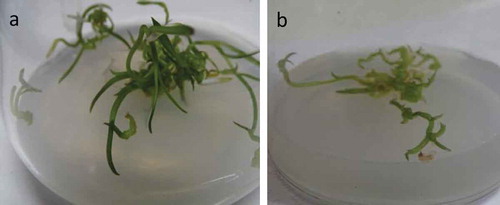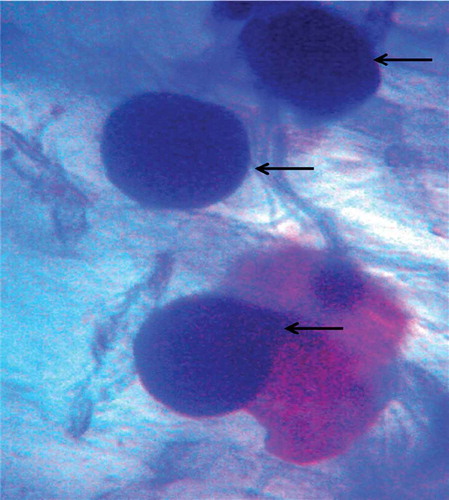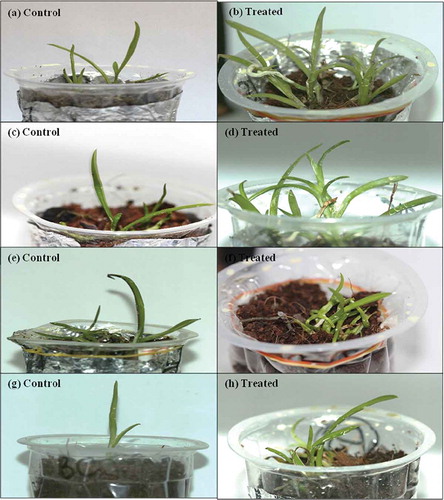Figures & data
Figure 1. In-vitro plant growth assay of Cymbidium aloifolium colonized by P. indica (a) compared to uncolonized plantlets, control (b) for 45 days of growth assay.

Figure 2. Morphological changes in growth pattern of the P. indica-colonized plantlet versus uncolonized plantlet in terms of mean of roots and shoots number (a) as well as mean of root and shoot length (b). Bar represents mean ± SE (n = 15). The data is significant at the level of P ≤ 0.05.

Figure 3. Microscopic view showing the formation of clamdospore in the cortical section of root tissue (arrow indicates the clamdospore formation inside the cortex region of root section).

Table 1. Bioactive compound present in methanolic extracts of the control plantlets (uncolonized).
Table 2. Bioactive compound present in methanolic extracts of the P. indica-colonized plantlets.
Figure 4. Acclimatization and hardening of the P. indica-colonized plants and uncolonized plants for 3 months using different compositions of substrate at different ratios. (a) Control. (b)Treated. (c) Control. (d) Treated. (e) Control. (f) Treated. (g) Control. (h) Treated.

Figure 5. Morphological changes in growth pattern of P. indica-colonized plantlet versus uncolonized plantlet (3-month-old) after acclimatization in terms of mean of roots and shoots number (a) as well as mean of root and shoot length (b). Bar represents mean ± SE (n = 15). The data is significant at the level of P ≤ 0.05.

